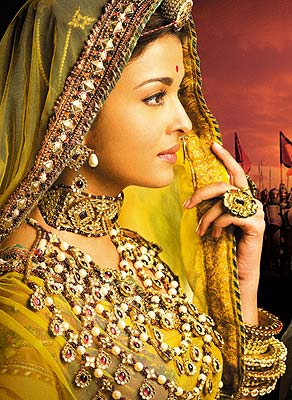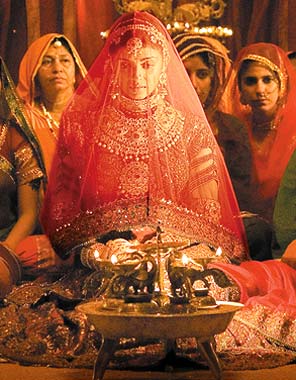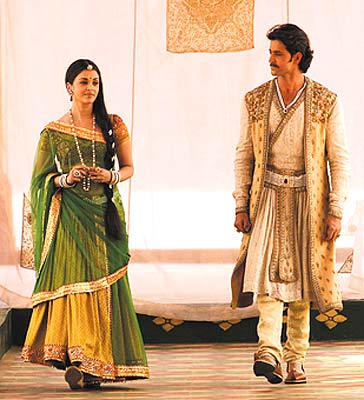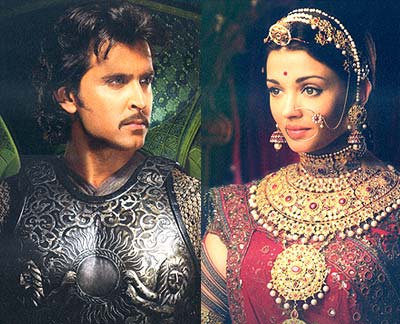
She has been in the film industry for two decades and won a National Award for her designs in Sanjay Leela Bhansali's Devdas.
Her latest assignment is designing for the Ashutosh Gowarikar's epic love story, Jodhaa Akbar. What makes the fashion designer's job easier is that she is no stranger to one of the stars, Aishwarya Rai Bachchan, whom Neeta has been designing for, in the last decade.
Neeta Lulla talks to Patcy N about Jodhaa-Akbar's elaborate outfits:
Though I have worked on period films like Devdas, Kisna and even a Hollywood film, One Night with the King, Jodhaa Akbar is one of the most challenging films I have ever done in the last 20 years.
One of the main reasons is because this is the first time I have designed for an entire cast -- from Hrithik Roshan and Aishwarya, to a commoner walking on the road.
What made it easier was that everything was well researched. Even then, I worked on this project for a year and half because there was very little information available about the costumes and jewellery worn during that period.
Gowarikar made things smooth. I am yet to come across a director like him who is so organised, calm and in sync with what the technicians are looking for.
I wasn't nervous while doing the film. I thrive on challenges and Jodhaa Akbar was one project that really excited me.

I designed the clothes myself. The accessories, however, were tricky so Tanishq (a leading jewellery brand) stepped in and gave me inputs. Gowarikar also gave me inputs. The accessories were made of gold, cut diamond, ruby, kundan and jade.
As the Mughal era was known for its grandiosity, we used a lot of warm tones though we were careful not to go overboard.
The costumes and accessories were quite heavy but the actors took it in their stride.
I share a great bond with Aishwarya. I have been designing for her for the last decade so I knew her likes and dislikes.

The most ornate costume I designed for Aishwarya in the film is her bridal dress as well as the one she wore for a celebration song. We chose the colour red for the bridal dress, which had a lot of embroidery. In fact, the grandness of the bridal dress was the ornate embroidery which I designed in detail and was brought to life by my artisans.
We got the fabrics from Delhi, Jaipur, Mumbai and Rajasthan.
We used a lot woven fabrics and different textures like brocades, silks and cotton. We used a lot of zardozi, kundan and stones embedded in the embroidery. We also had gotta work done on some of the costumes.

For shoes, we got authentic embroidered mojris from Rajasthan.
Hrithik found it difficult to handle so much ornate work. I don't think anyone would like to wear so much ornate stuff.
I also kept in mind the character while designing the clothes. For example, I used a lot of dark tones of brown, black and green while designing for Nikitin Dheer's negative character.
The jewellery used in Jodhaa Akbar go back to the days of age-old traditions, but with a few modifications.

People may love the accessories of those grand days when they see them in the film but at the same time wearing them in real life is not feasible. People may not be able to afford them.
Plus, more and more people are looking for comfort as well as fashion. So, what I was aiming at is a blend of both -- bringing back the grandness of those days in today's time zone.
Courtesy: Rediff.com
